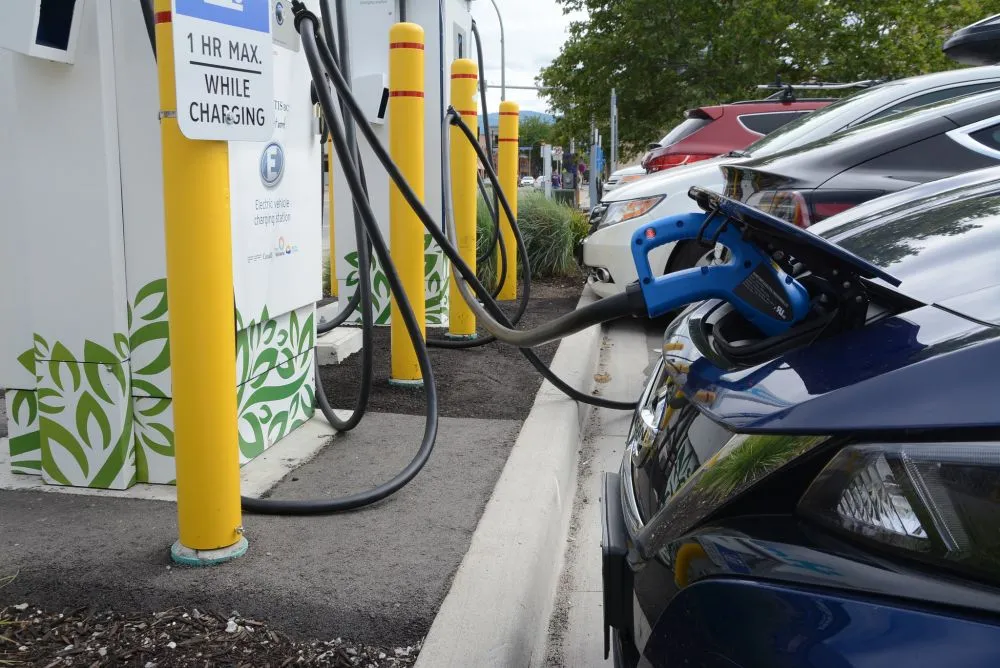1. What is the Zero-Emission Vehicle (ZEV) sales mandate?
The zero-emission vehicle sales mandate requires auto manufacturers and importers to ensure that a specified percentage of their total light-duty vehicle sales (sedans, compacts, light SUVs) be zero- or low-emission. California was the first region to implement a zero-emission vehicle policy, in 1990; more recently, China legislated a ZEV sales mandate as have Quebec and British Columbia. The federal government’s proposed regulation will require that 60% of new light-duty vehicle sales be zero-emission vehicles by 2030, increasing to 100% of sales by 2035. As in Canada, the UK government is currently engaged in public consultations on the implementation of a zero-emitting vehicle sales mandate.
2. Why are we talking about it now?
We are talking about the sales mandate now because the federal government recently (December 2022) came out with a proposal to amend the Canadian Environmental Protection Act (CEPA). This act, among other things, regulates the fuel economy including emissions from light-duty vehicles in Canada. In the December 2022 proposal, the government sets out ZEV sales targets for automakers starting in 2026 and increasing over time. Following the December announcement, the government launched a three-month consultation period, ending March 16, seeking feedback on the proposed policy. The Ministry of Environment and Climate Change will review the feedback and will likely publish the final version of the regulations by end of 2023.
3. Why do we need a ZEV sales mandate?
Canada has made a commitment to sector-wide reductions in greenhouse gas emissions. The goal is to reduce emissions by 40% to 45% below 2005 levels by 2030, with additional reductions to net-zero by 2050. The policies that are currently in place, including the carbon tax, the Clean Fuel Regulation, and various provincial policies are not sufficient by themselves for Canada to reach the 2030 climate target, let alone net-zero emissions in 2050. Other strong climate policies are needed. The zero-emission vehicle sales mandate will be essential to an effective suite of climate policies and has been identified as the most cost-effective regulation for switching from passenger cars powered by fossil fuels to electric ones. Without this sales policy, including the policy’s proposed quota requirements, Canada is at serious risk of failing to meet its climate commitments.
4. There are credits involved in implementing the sales mandate. What’s with that? Who gets them and what are the benefits?
Credits are largely an accounting tool to help manage compliance with the sales regulation. Under the proposed regulation, a single credit is issued for every ZEV sold. (Note that not all electric vehicles are equal. A plug-in hybrid receives half a credit because hybrids have a shorter electric driving range compared to a battery electric vehicle, which requires no fossil fuels.) Under the ZEV sales mandate, automakers must earn a total amount of credits each year. They can earn credits in one of several ways: through the production and sales of ZEVs; by purchasing credits from another ZEV manufacturer; or by installing a charging station. As long as the automaker meets the yearly credit requirement, the government does not care which of the mechanisms they choose.
5. Is there a penalty if an automaker misses the quota?
There are no financial penalties for non-compliance. If an automaker misses their quota, they are subject to enforcement policies as per the CEPA. Enforcement follows an escalating series of steps, including notification of potential non-compliance. Subsequent steps can eventually escalate to prosecution if automakers continue not to comply with the regulation. The formal implementation of the zero-emission vehicle mandate should entail greater transparency on the consequences of non-compliance.
6. What is the anticipated outcome of implementing a ZEV sales mandate?
The anticipated outcomes of implementing the ZEV mandate are twofold. First, the mandate will reduce tailpipe emissions and therefore, pollutants in the air as well as greatly increase the likelihood of achieving the 2030 GHG emissions reduction target. Second, the policy will give a clear, long-term signal to the auto manufacturing sector – including large automakers, auto parts suppliers, battery manufacturers, battery recycling companies, charging infrastructure operators – that investing in ZEVs will pay off. Investors need this kind of policy clarity before committing to making sizable investments. The more EVs produced, the lower the unit cost and the greater the number of ZEVs available for sale to consumers.
7. So many ZEVs, so few chargers. Is this the right order of operations or are we putting the cart before the horse?
Building out a network of charging stations is critical. However, without enough electric vehicles on the road, the business case for investing in charging infrastructure is risky. The two initiatives need to happen in parallel. A zero-emission vehicle mandate needs to be implemented signaling to investors that charging infrastructure entails minimal risk as more electric cars come onto the road. At the same time, new charging stations are now eligible for government subsidies and rebates, although financial supports need to be more widely available.
8. How will the cost of charging my car compare to buying a full tank of gas?
The difference in cost between charging a car and filling it with gas will depend on a number of factors. However, consumers can expect to save money when switching from gas to electric. For example, estimates show that, over the course of a year, driving an electric Chevy Bolt approximately 20,000 km in the Greater Vancouver area would set the consumer back $478 ($40/month) compared to spending $3,340 over 12 months ($278/month) for a gas-powered Chevy Trax. Similar cost savings can be expected in other provinces. Ottawa Hydro estimates that charging an electric car costs around $300 a year, compared to $1,000 to $2,500 to fill up a comparable gas-powered car.
9. I can’t afford a ZEV anyway. What’s in it for me?
The regulation will require automakers to produce and sell more ZEVs, meaning the supply of electric cars at dealerships will increase; automakers will also be incentivized to lower the cost of the ZEVs they sell so that they can meet their quota and comply with the regulation. In addition to the anticipated reduction in purchase price, federal rebates for consumer purchases are available. Many provinces and territories also offer rebates for ZEV purchases. Whether or not someone drives an EV, everyone benefits from a climate resilient future and less air pollution. According to a recent study by The Atmospheric Fund, a 100% sales mandate in ZEVs translates to $90 billion in health care savings over 25 years and 11,000 avoided premature deaths thanks to cleaner air.
10. This is all about passenger cars. There are a lot of trucks out there and their emissions are much higher than those of car. How come they’re not part of this regulation?
Passenger cars are responsible for about half of Canada’s transportation emissions, hence the importance of taking swift action in implementing strong and effective policies. However, emissions from trucks continue to rise and are projected to become the largest source of GHG emissions from Canada’s transportation sector by around 2030. The Government of Canada has announced a commitment to develop a medium- and heavy-duty vehicle regulation that will require 100% of truck sales to be zero-emission by 2040, with interim sales targets. Implementing a zero-emission vehicle mandate for passenger cars will establish a strong foundation for effective regulations addressing truck emissions next.
Learn more about electrifying transportation:
- Op-ed: Eligibility for Canada’s EV incentives should be income-based
- Report: Taking Charge: How Ontario can create jobs and benefits in the electric vehicle economy
- Report: Power Play: Canada’s role in the electric vehicle transition
- Submission: Reducing barriers for the adoption of light-duty zero-emission vehicles









